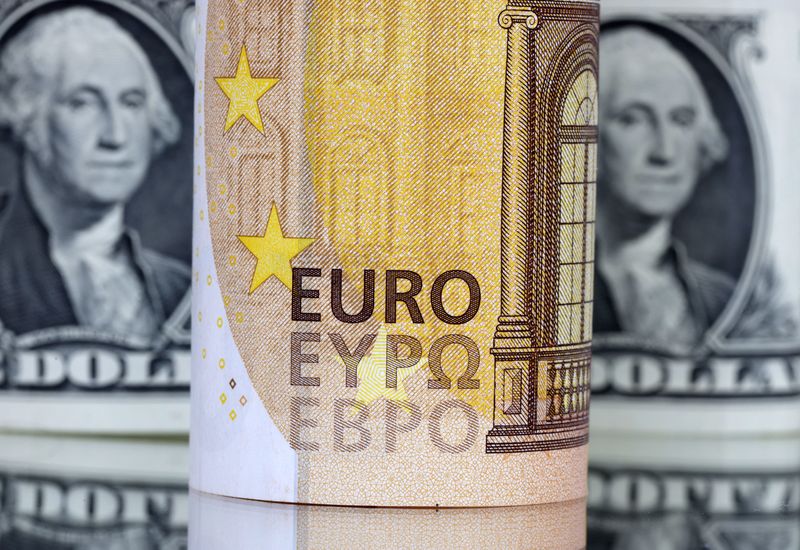Euro bulls wince as US-EU trade deal slams the brakes on rally
By Alun John, Yoruk Bahceli and Nell Mackenzie
LONDON (Reuters) -Euro bulls are facing the first big test of their conviction in the form of the European Union’s U.S. trade deal, which has cast doubt on the durability of one of 2025’s most popular trades.
The euro, which hit a four-year high of $1.1830 earlier this month, was last at $1.1554 following its biggest two-day drop since April on Tuesday, after the EU agreed to a 15% tariff on its U.S. exports – half the rate President Donald Trump had previously threatened, but well above the roughly 1.5-2% rate prior to his return to the White House.
While it inched higher on Wednesday, it was set for its first monthly drop this year, down nearly 2% in July.
That’s quite a reversal. The euro’s 14% gain in the first half of the year was the biggest since its creation, as investors rushed to the common currency on the back of the announcement of a once-in-a-generation shift in German fiscal spending just as U.S. President Donald Trump’s erratic trade policies drove flows out of U.S. assets.
But both of those factors are challenged by the agreement: The European economy will still take a hit from the tariffs, while deals the U.S. has agreed with the EU and other partners have reduced fears about a major slowdown there.
“The long euro trade is undoubtedly facing a reality check this week,” said Bruno Schneller, managing director at Erlen Capital Management.
“Monday’s sharp drop in euro/dollar felt like more than just a reaction to headlines — it exposed how stretched positioning had become in one of the market’s most consensus views.”
“What stood out wasn’t just the magnitude of the move, but the lack of support on the way down.”
Going into the weekend, speculators were sitting on a bullish bet on euro futures worth $18.4 billion, the largest since December 2023, according to weekly data from the Commodity Futures Trading Commission.
That position has been building since last December. At the start of the year speculators held one of their largest bearish positions in the euro in almost five years.
RELATIVE ECONOMIC PERFORMANCE
The euro also weakened sharply against other currencies on Monday, dropping 0.8% on the pound and 0.7% on the Japanese yen, again after recent gains.
But the bulk of its moves, both up this year, and down this week, have been against the dollar. In trade-weighted terms, the euro is only up about 5% this year.
And its gains on the U.S. currency were already slowing as initial pessimism towards the U.S. at the start of the year faded thanks to strong economic data and earnings, reinforced by the flurry of trade deals with Japan and the EU, and ongoing negotiations with China.



Leave a Comment
Your email address will not be published. Required fields are marked *